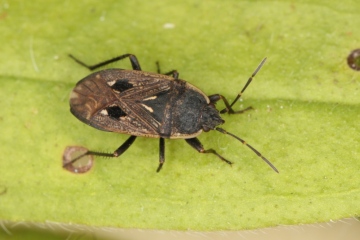Species Account for Graptopeltus lynceus
PLEASE NOTE, many records in this group are not yet available
Graptopeltus lynceus (Fabricius, 1775)
Heteroptera: Lygaeidae

Reproduction for study and non-profit use permitted, all other rights reserved.
Taxonomic group: true bugs (Heteroptera) - Available county data
View time series maps for Graptopeltus lynceus
member log-on for taxon report
Status: Nb
Essex RDB: Listed
Images
upload a new image
see British Bugs website
Essex Red Data List comment
National trend: Past decline; possible recent increase
Species text
This bug is recorded from southern England, particularly the south-east. It is associated with Boraginaceae, particularly Viper's-bugloss Echium vulgare. It is found in dry, open, sunny situations, most often on sand. References
Habitats
Why not join the Club, register and add a new species page
Interpretation of distribution maps
























